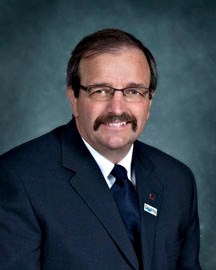Whether Okotoks chooses to grow or keep the 30,000 population cap, the Calgary Regional Partnership will respect whatever council decides, but officials warned the Town will have to live with the consequences of its decision.
Officials with the Calgary Regional Partnership (CRP) met with Okotoks councillors last month to update them on the plan as part of a series of meetings to raise awareness of growth and water issues.
CRP chairman Truper McBride said the CRP respects municipal autonomy and the question of whether Okotoks will grow in the future or not is a local issue the partnership will not wade into. As well, he said the Calgary Metropolitan plan can be changed to remove a population target of 60,000 for Okotoks if councillors want.
“The Calgary Metropolitan Plan completely respects Okotoks’ decision to cap at 30,000 if that is the wish or desire of the council,” McBride told Okotoks councillors last month.
However, on the same token he said the CRP cannot stop growth in the region and around Okotoks.
While the plan can be changed to reflect Okotoks’ population cap, CRP planner Bob Miller said this won’t prevent the MD of Foothills from developing on Okotoks’ borders if it chooses. As well, he said regional planning will continue around the town regardless of whether or not it keeps the cap.
“The conversation does not stop there because you are not an island south of Calgary in isolation,” said Miller. “The services come down to a network of communities here.”
If Okotoks decided to remain at 30,000 he said the growth will shift elsewhere.
According to Miller, the 60,000 population target for Okotoks was put in place to leave the option open for rail transit service, not for a water pipeline. Rail transit services would only succeed with a population between 40,000 to 60,000, he said and Okotoks may not be viable for rail transit with a 30,000 population.
“The idea was that if this is going to be a community that is large enough to accommodate a train and do it successfully, it should be with a population of 60,000,” said Miller.
Okotoks Coun. Stephen Clark said he’s encouraged the CRP will respect whatever the Town decides, but the question of how the additional 30,000 people anticipated to live in Okotoks will be accommodated in the region still needs to be answered.
He said it makes the most sense from both an economic and environmental standpoint to accommodate this number in Calgary and areas where transportation and water infrastructure already exist.
As well, Clark said it would also allow money allocated for a water pipeline to Okotoks to be put towards other priorities.
He said there is little indication the MD is open to accommodating 30,000 people in new developments in its area or around Okotoks’ borders. If this were to happen in the future, Clark said the Town could deal with it.
“Like any plan it has to be a living document and if we cross that road in 20, 30, 50 years at that point we make the decision,” he said.
Okotoks Mayor Bill Robertson said managing growth on the Town’s borders comes down to having a robust agreement with the MD of Foothills.
“I agree we wouldn’t be able to stop what goes on around us unless we have an agreement with our neighbour,” he said. “If our neighbour agrees and will respect what we want and adhere to it, I think that is controlling what goes on around us.”
Robertson said keeping the cap may limit what level of commuter transit service Okotoks will ultimately receive. He said the Town’s population is already adequate for bus service to the city.
However, Coun. Ed Sands questioned whether Okotoks would really be bypassed for commuter rail service in the future if the town doesn’t grow beyond 30,000. He said the foothills region’s population could grow to upwards of 90,000 people someday and should be enough for a commuter rail service.
“What if High River gets it with 45,000 to 60,000 people, the train has to go right through us because we have the railway tracks, unless your planning on building right next to Highway 2,” said Sands.




